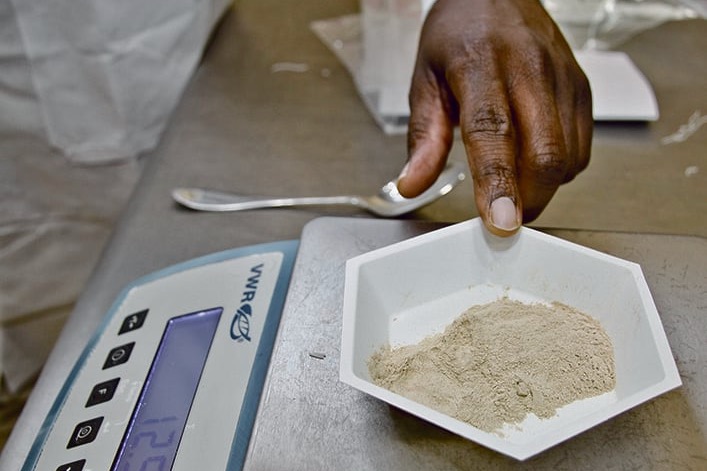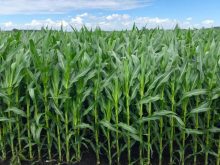In a lab at the University of Manitoba, Lovemore Malunga holds up a Ziploc bag containing a whitish-light brown powder. He opens the bag and carefully pours the powder into a small, plastic container.
A master’s student, Vanessa Alexander, takes the container and places it on a scale. She adjusts the scale — to account for the weight of the container — and takes a reading.
The powder weighs 139 grams.
Read Also

Claas brings 1000 Series SP forage harvesters to Canada
In mid-August, Claas unveiled its new line of Jaguar forage harvesters at an event in Visalia, California, deep in the heart of that state’s dairy region.
So, not a lot.
But that small amount may soon become a big deal for Canada’s oat industry.
The powder is oat protein, which could potentially compete with soy, whey, casein and pea protein for a share of a US$20 billion global market for protein bars, drinks, supplements and ingredients.
“It’s a relatively new area… The big companies (have) focused a lot on pea protein. Now it’s shifting to oats,” says Sijo Joseph, an Agriculture and Agri-Food Canada research scientist, who works in Winnipeg and Morden, Man. “Oat protein has a very neutral flavour. Which opens up a lot of formulations.”
Joseph and other AAFC experts spoke about the potential for oat protein in December at the Richardson Centre for Food Technology and Research at the U of M.
Joseph studies the compounds in cereals and other crops that could provide a benefit for human health. He was trained by Nancy Ames, a now-retired AAFC scientist who conducted research on beta glucan fibre in oats.
In the late ’90s, the U.S. Food and Drug Administration (FDA) said beta glucan lowers blood cholesterol in humans, making oats the first food with an official health claim.
Health Canada followed up with a similar decision in 2010. That’s why Cheerios and other oat cereals today have a heart health claim on the box.
Joseph and his fellow AAFC scientists are building on Ames’ work, focusing on oat protein and potential benefits for heart health.
Most nutritionists already know oats are healthy — possibly a superfood — but part of that reputation is anecdotal.
In a boardroom at the Richardson Centre, Malunga shares one such anecdote. An AAFC scientist who studies functional and nutritional properties of pulse crops and cereals, he mentions a book on human nutrition.
In the introduction, the author compared the typical diets of Scotland to Ireland.
Scots love oats and porridge is almost a national dish, whereas in Ireland, oats are traditionally fed to horses.
“That explains (the book noted) why one of the countries have stronger men and the other country has stronger horses,” Malunga says, and laughs.
Health benefits
Joseph may be an expert in oats and the healthy compounds in the cereal crop, but he’s not a fan of oatmeal.
He doesn’t like the “viscous” or sticky texture of porridge. He prefers an Asian dish called upma, which contains oats, veggies, peas, chilis, nuts and spices.
“It’s very tasty. I eat (it) every single day,” he said. “I don’t want to eat wet porridge.”
Joseph didn’t share those feelings about oatmeal during the Prairie Oat Growers Association annual meeting, held in December in Winnipeg, at which he spoke about AAFC research on oat protein and the health effects in lab rats.
His research has found rats who consumed oat protein had lower blood cholesterol levels than those that did not — and, importantly, the chemical compounds that lower cholesterol are distinct from the beta glucan fibre in oats.
“It works in a totally different way… (more) like statins,” Joseph says, referring to the group of drugs used to lower so-called “bad” cholesterol. “It inhibits the cholesterol (formation) in the body.”
That finding is significant, as it could lead to a health claim specific to oat protein— but that outcome is long way down the road. Joseph, Malunga and other AAFC scientists need to test the oat protein in human health trials.
It could take a year to formulate an oat protein product to be used in trials. Then they must recruit subjects, conduct trials and analyze results.
But it could be worth the effort, because the data from the rat studies looks very promising, Joseph says.
Accounting for taste
In the last five years or so, a massive amount of private and public capital in Canada has flowed into pea protein.
Roquette, a French firm, built a $500 million pea processing plant at Portage la Prairie, Man. and the federal government invested $100 million (mostly in loans) to help build the Merit Foods plant in Winnipeg. The Merit plant was supposed to produce protein from canola and peas but has been mothballed since the company went into receivership last year.
Peas produce a healthy protein that can be used in multiple foods, including substitutes for meat. But demand for plant-based ‘meat’ has softened in the last couple of years.
Also, pea protein isn’t for everyone.
“The pulse proteins have sensory issues. It has that beany (flavour). Some people don’t like that taste,” Joseph says. “What we hear… and we have tested it, (oats) is very neutral.”
There could be an opportunity to combine pea and oat protein, to make a plant-based protein that checks the boxes for both nutrition and taste.
“If you mix pulse protein with oat protein, you get the complete amino acids,” Joseph said.
Roquette may have reached the same conclusion. In 2022, Protein Industries Canada announced $4.1 million in funding to help Roquette and Oat Canada, an oat food company in Toronto, to make a protein from oats.
“Through our partnership with Oat Canada and the support of Protein Industries Canada, we are well positioned to continue our innovation and research on oat protein with the goal of meeting consumer demand for new and exciting plant-based food options,” Leon Zhou, head of research and development for Roquette Americas, said at the time.
Roquette said in a release it will develop Canada’s first “oat-protein ingredient” and Oat Canada will test the protein in its products.
Oats are well positioned to compete with dairy protein and soy, which dominate the market for protein supplements, bars and other foods.
Oats are gluten-free, they have a neutral taste and the protein may lower cholesterol.
“(And) it’s a very functional protein. It could be added to a lot of food products,” Joseph said.
“Once they figure out the other commercializing (details), it will open up a lot of opportunity for oat protein.”
Competing on cost
In 2023, Vantage Market Research predicted the global market for protein supplements could reach US$32.5 billion by 2030. The products are typically used by athletes, bodybuilders and ordinary people wanting to increase protein intake.
“These supplements are available in various forms, including powders, bars and ready-to-drink beverages, and are made from a variety of protein sources such as whey, casein, soy, pea and hemp,” Vantage says.
There should be room for oats in that market, as many consumers already like oat-based foods.
Demand for oat milk, for instance, has exploded in the last five or six years. It has become the No. 2 dairy alternative, after almond milk.
U.S. oat milk sales were US$660 million in the 52-week period ending in July 2023, Agfundernews.com reported.
But while the product may have natural advantages, like taste and familiarity, oats contain less protein than soy and peas. Oat protein ranges from 15-22 per cent.
“The question: how cheap will it be?” Malunga says.
Processors and scientists will need to find uses for the other components in oat kernels: the starch, the oil and the fibre.
AAFC’s scientists in Winnipeg may have identified a potential market for the starch.
At the Richardson Centre, Malunga holds up a bunch of long, thin noodles. He explained they are oat starch noodles, developed by scientists at the centre.
Starch noodles are popular in Asian cuisine, particularly in China and Korea.
The noodles made in the Winnipeg lab could become an alternative to noodles made from sweet potato starch, mung beans or rice starch.
And there may be other uses for oats that haven’t been discovered — yet.
In the meantime, Joseph, Malunga and others with AAFC will continue their work on oat protein and whether it can improve cardiovascular health.
“I’ve been working on functional foods and food ingredients… the last 15 to 16 years. I’ve never seen a protein molecule having that much of an outcome, with these health impacts,” Joseph says. “From a research point of view… I really want to take it (oats) to the next level.”















